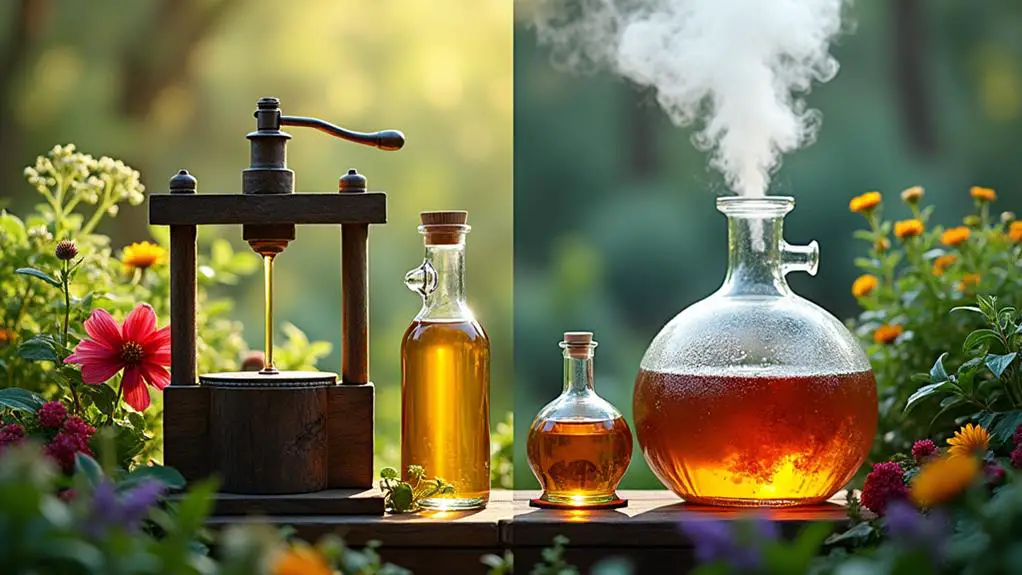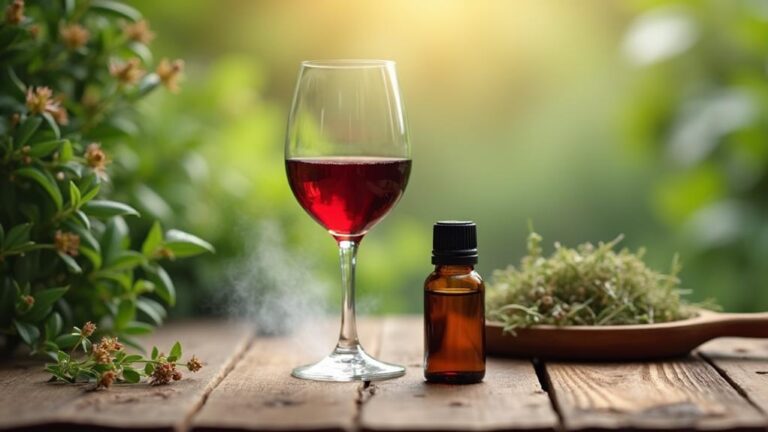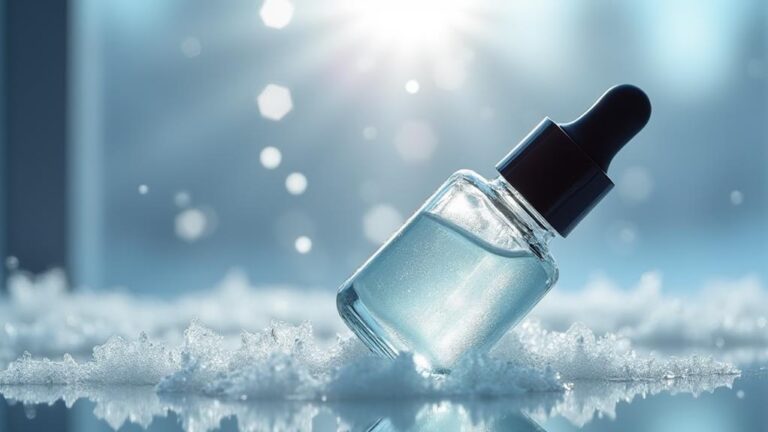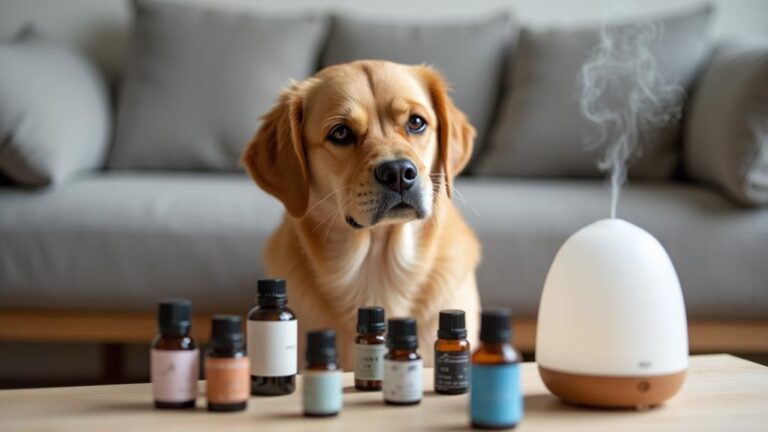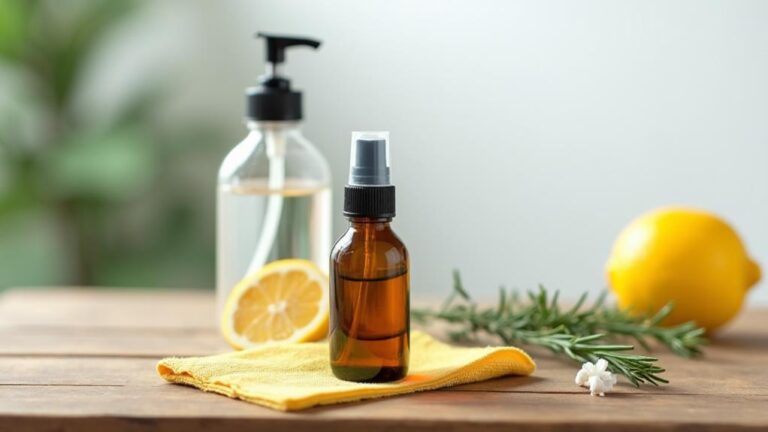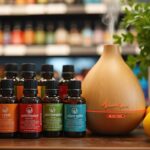As you navigate the complex landscape of natural oils, the distinction between bio oils and essential oils can seem as murky as a dense forest. But one thing is clear: these two types of oils have distinct personalities, shaped by their extraction methods, concentration levels, and therapeutic benefits. Essential oils, for instance, are the intense, highly concentrated cousins of bio oils, which are often milder and more diluted. But what exactly sets these oils apart, and how can you harness their unique properties for your own well-being? The answer lies in understanding the distinct characteristics that define each.
Key Takeaways
- Bio oils are milder and less potent than essential oils due to their chemical structure and production processes.
- Essential oils are up to 70 times more potent than bio oils and often require dilution for safe use.
- Bio oils generally have a longer shelf life than essential oils, but both can oxidize and lose potency when exposed to heat, light, or air.
- Bio oils tend to have milder, more subtle scents compared to essential oils, which are highly concentrated and can be overpowering.
- Essential oils are often used in aromatherapy and therapeutic applications, while bio oils promote long-term wellness benefits through consistent use.
Extraction Process Differences
When you hold a bottle of bio oil or essential oil in your hand, it's easy to forget the intricate process that brought those precious liquids to life. However, understanding the extraction process differences between the two is vital in appreciating their unique characteristics and uses.
Mechanical pressing is one of the primary methods used to extract bio oils. This process involves using a mechanical press to squeeze out the oil from seeds, nuts, or fruits. It's a gentle and chemical-free method that preserves the oil's natural nutrients and properties.
On the other hand, essential oils are often extracted using a combination of methods, including solvent dissolving and mechanical pressing. Solvent dissolving involves soaking plant material in a solvent to release the essential oils, which are then separated from the solvent through distillation or evaporation.
This process can be more effective for certain plant materials, but it may also leave behind residues or alter the oil's chemical composition. Understanding these differences in extraction processes can help you make informed decisions about which oil to use for your specific needs.
Oil Concentration Levels
When comparing bio oils and essential oils, you'll notice significant differences in their concentration levels.
Bio oils tend to be milder and less potent due to their chemical structure, while essential oils are highly concentrated, often requiring dilution for safe use.
As you explore the world of bio oils and essential oils, understanding their varying levels of potency and strength will help you make informed choices for your therapeutic needs.
Bio Oil Potency
Bio oils, like any other oil, have varying levels of potency, which is measured by their concentration levels. You may notice that the potency of bio oils can vary depending on factors like the source of the ingredients, production methods, and even the manufacturer.
This bio oil variability can affect how well the oil works for your specific needs.
When choosing a bio oil, it's vital to look for products with consistent concentration levels. Oil batch consistency is vital, as it guarantees that you're getting a product that works as expected every time you use it.
Some manufacturers may use a standardized process to guarantee consistency, while others may not.
As a consumer, you want to make sure you're getting a product that delivers the desired results. Checking the label for concentration levels and looking for third-party certifications can help you make an informed decision.
Essential Oil Strength
You've likely considered the potency of bio oils and the importance of consistent concentration levels. When it comes to essential oils, their strength is often misunderstood.
Essential oil strength refers to the concentration level of the oil, which is essential for aromatherapy efficacy. Typically, essential oils are highly concentrated, with some oils being up to 70% more potent than bio oils.
The concentration level of essential oils is often due to their solubility in carrier oils. Some essential oils, like peppermint and eucalyptus, are highly soluble, which allows them to be used in higher concentrations.
On the other hand, essential oils like chamomile and lavender may require lower concentrations due to their lower solubility.
Understanding essential oil strength is imperative for safe and effective use.
Using highly concentrated essential oils without proper dilution can lead to skin irritation and other adverse effects. By recognizing the concentration level of essential oils, you can create effective aromatherapy blends that promote relaxation, reduce stress, and improve overall well-being.
Always check the label or consult with a healthcare professional to guarantee safe and effective use of essential oils.
Concentration Comparison
How do bio oils and essential oils compare regarding concentration levels? When you consider the molecular structure of both oils, you'll notice that essential oils are much more concentrated.
They can be up to 70 times more potent than bio oils. This is because essential oils are extracted from the essence of plants, usually through steam distillation or cold pressing, which helps preserve their natural potency.
Bio oils, on the other hand, are often diluted with carrier oils to create a blend that's gentle on the skin. This dilution is necessary because bio oils are also highly concentrated, but they can be quite harsh if used undiluted.
However, when you mix them with carrier oils, you can achieve a perfect balance of potency and bio compatibility. This balance is essential for therapeutic applications, as it allows the oil to penetrate deep into the skin without causing irritation.
Shelf Life Variations
When storing bio oils and essential oils, you'll notice distinct shelf life variations due to their unique storage requirements.
Generally, bio oils have a longer shelf life than essential oils, but both can oxidize and lose potency if exposed to heat, light, or air.
Storage Requirements
Most bio oils and essential oils have distinct storage requirements that substantially impact their shelf life. When you store these oils, it's vital to take into account the environment and the type of container you use.
Bio oils, in particular, are prone to oxidation and spoilage when exposed to heat, light, and air. To prevent this, you should store them in sealed containers to minimize exposure to oxygen.
Essential oils, on the other hand, are sensitive to light and can degrade quickly if exposed to direct sunlight or UV rays. Dark bottles are ideal for storing essential oils, as they filter out UV rays and protect the oil's potency.
It's also essential to keep both bio oils and essential oils away from heat sources, such as radiators or ovens. A cool, dry place is usually the best environment for storing these oils.
Expiration Dates
As you navigate the world of bio oils and essential oils, you'll notice that their expiration dates can vary substantially. This disparity is largely due to differences in label regulation and packaging impact.
Essential oils, being highly concentrated, can last for several years if stored properly. However, their shelf life is often shorter than that of bio oils. Bio oils, on the other hand, typically have a longer shelf life due to their lower concentration of active compounds.
When checking the expiration dates, it's vital to note that essential oils are often labeled with a "best by" date, while bio oils may have a "use by" or "expires" date. The difference lies in the manufacturer's confidence in the product's quality over time.
Packaging also plays a vital role in determining shelf life. Essential oils in dark glass bottles with tight-fitting lids can last longer than those in clear plastic bottles exposed to light and heat. Conversely, bio oils in airtight containers can maintain their potency for an extended period. Always check the label and packaging to verify you're using your oils within their ideal shelf life.
Aroma and Fragrance
Stepping into the domain of bio oils and essential oils, you're immediately enveloped in a world of distinct aromas and fragrances. As you explore these oils, you'll discover their unique characteristics and uses in perfume creation and fragrance profiling.
When it comes to aroma and fragrance, there are key differences between bio oils and essential oils.
- Bio oils often have a milder, more subtle scent compared to essential oils.
- Essential oils are highly concentrated and can be overpowering if not blended properly.
- The fragrance profile of bio oils is often more consistent due to their standardized production process.
- Essential oils can vary in fragrance profile depending on factors like the plant's growing conditions and harvesting method.
- Bio oils are often used in fragrance profiling to create a base note or fixative, while essential oils are used to create top notes or accent scents.
Understanding the differences in aroma and fragrance between bio oils and essential oils can help you navigate the world of perfumery and create unique, complex scents that evoke emotions and uplift the senses.
Therapeutic Benefits
Your understanding of the differences in aroma and fragrance between bio oils and essential oils provides a solid foundation for exploring their therapeutic benefits.
When it comes to therapeutic benefits, both bio oils and essential oils offer a range of advantages, but they cater to different needs. Essential oils are highly concentrated and often used to address specific health concerns, such as anxiety and stress. They can promote emotional balance and mental health by influencing the brain's limbic system.
Bio oils, on the other hand, offer a more subtle approach to wellness. They can help to calm and soothe the mind and body, promoting relaxation and reducing inflammation.
While they may not have the same potency as essential oils, bio oils can provide long-term benefits when used consistently. With regard to mental health, bio oils can help to reduce symptoms of depression and anxiety by creating a sense of calm and well-being.
Skincare Uses Vary
Exploring the skincare uses of bio oils and essential oils reveals a diverse range of applications and benefits.
When you incorporate these natural oils into your skincare routine, you can experience their unique properties and advantages.
Bio oils are often used for their moisturizing and nourishing properties, while essential oils are valued for their ability to address specific skin concerns.
For example:
- Bio oils can help to lock in moisture and soothe dry skin, making them ideal for dry or sensitive skin types.
- Certain essential oils, such as lavender and tea tree oil, have antimicrobial properties that can help to control acne and reduce inflammation.
- Bio oils rich in antioxidants, like argan oil, can provide anti-aging benefits by protecting the skin from environmental stressors and promoting collagen production.
- Essential oils like frankincense and geranium can help to balance the skin's natural pH and reduce the appearance of fine lines and wrinkles.
Production Costs Differ
The production process of bio oils and essential oils differs substantially, resulting in varying costs for these natural skincare products. When you evaluate the market analysis and economic impacts of both products, it becomes clear why the prices differ.
Bio oils, often derived from plant sources like seeds, nuts, and fruits, are generally less expensive to produce due to simpler extraction methods and lower raw material costs. In contrast, essential oils are typically obtained through more labor-intensive processes like steam distillation or cold pressing, which drive up production costs.
The varying production costs of these natural oils can substantially affect your purchasing decisions. As you weigh the benefits of each product, it's crucial to take into account the economic impacts on the environment and local communities.
Essential oils often support smaller, sustainable farming operations, while bio oils may be sourced from larger industrial farms. When choosing between bio oils and essential oils, you're not just selecting a skincare product – you're also influencing the market and supporting specific economic systems.
Skin Absorption Rates
When it comes to your skincare routine, you're likely looking for products that not only nourish but also penetrate deeply into your skin.
Bio oils and essential oils have different skin absorption rates, which can affect how well they work for various skin types.
- Bio oils, such as jojoba and argan oil, are easily absorbed into the skin due to their molecular structure and high fatty acid content.
- Essential oils, on the other hand, are highly concentrated and often require a carrier oil to be safely applied to the skin.
When using bio oils, you may notice they penetrate quickly, providing hydration and nourishment to the skin.
Essential oils, when combined with a carrier oil, can provide a more intense therapeutic effect, but may not be as readily absorbed.
Factors affecting skin absorption rates include individual skin types and the skin's natural barrier function.
Understanding the skin absorption rates of bio oils and essential oils can help you choose the right product for your specific skin care needs.
Ingredient Purity Levels
When exploring the world of bio oils and essential oils, you're likely to notice variations in ingredient purity levels that impact their therapeutic value.
To evaluate these oils effectively, take into account the raw material sources, as some oils are derived from organic or sustainably grown plants, while others may come from conventional farming practices.
You'll also want to examine the extraction methods used, as well as the refining process levels, to understand how these factors influence the final product's purity and potency.
Raw Material Sources
Several factors set bio oils and essential oils apart, and one key difference lies in their raw material sources.
When you consider the raw materials used for these oils, it's crucial to think about the soil composition and how it affects the plants' growth.
Bio oils often use plant materials that have been cultivated on a large scale, which can result in varying levels of quality.
On the other hand, essential oils are typically derived from plants that have been carefully selected for their unique botanical properties.
These plants are often grown in specific regions with ideal soil conditions, which enhance their therapeutic properties.
Some key differences in raw material sources include:
- Bio oils may use plant materials with lower therapeutic value due to factors like soil degradation or pesticide use.
- Essential oils often require specific soil compositions to bring out the desired botanical properties.
- The quality of the soil can affect the plant's ability to absorb essential nutrients and minerals.
- Botanical variations in essential oils can result in distinct therapeutic properties.
- The sourcing of raw materials can substantially impact the overall quality and effectiveness of the final product.
Extraction Methods Used
The raw materials used for bio oils and essential oils set the stage for the next significant difference between these two types of oils: extraction methods used. Since bio oils come from seeds, nuts, or fruits, they're typically extracted using a mechanical process like cold-pressing or solvent extraction. This method guarantees that the resulting oil retains its nutritional properties and flavor.
On the other hand, essential oils are extracted from the roots, stems, leaves, or flowers of plants using steam distillation or solvent extraction.
The extraction method used also depends on the cultivation techniques and harvesting practices employed. For example, if you're using organic farming methods, you'll want to choose an extraction method that aligns with those principles.
Harvesting practices also play a role, as the timing and handling of the plant material can affect the quality of the final product. By choosing oils that are extracted using methods that respect the plant material and the environment, you can guarantee that your bio oils and essential oils are of the highest quality and purity.
This, in turn, can enhance their therapeutic benefits and overall effectiveness.
Refining Process Levels
Your choice of bio oils and essential oils can also depend on the level of refinement they undergo, which substantially impacts their purity and therapeutic benefits.
As you explore the differences between these two types of oils, it's crucial to evaluate the refining process levels. Bio oils, in particular, often undergo a higher level of refinement to guarantee they meet food-grade standards.
Some key refining process levels to evaluate:
- Crude separation: This is the initial step in refining, where the oil is extracted from the plant material.
- Oil filtering: This process removes impurities and sediment from the oil, resulting in a clearer and more stable product.
- Degumming: This step involves removing impurities like phospholipids and other contaminants.
- Bleaching: Some oils may undergo bleaching to improve their color and appearance.
- Deodorizing: This final step removes any unpleasant odors or flavors from the oil.
When choosing between bio oils and essential oils, evaluate the refining process levels and how they impact the oil's purity and therapeutic benefits. A higher level of refinement may be beneficial for some uses, but others may prefer a more natural, minimally processed oil.
Safety Precautions Required
When using bio oils and essential oils, it's essential that you handle them with care and take necessary precautions to avoid adverse effects on your skin and overall well-being.
You may be at risk of allergic reactions if you don't use these oils properly. Always do a patch test on a small area of your skin before using a new oil to check for any sensitivity.
This is especially critical if you have a history of allergies or skin conditions.
As a user, you're also exposed to occupational hazards such as skin irritation, eye problems, and respiratory issues if you inhale the fumes or come into contact with the oils in large quantities.
To minimize these risks, wear protective gloves, work in a well-ventilated area, and avoid ingesting the oils.
When storing bio oils and essential oils, keep them away from children, pets, and heat sources to prevent accidents.
By taking these precautions, you can enjoy the therapeutic benefits of bio oils and essential oils while maintaining your safety and well-being.
Always follow the recommended usage guidelines and consult with a healthcare professional if you're unsure about using these oils.
Frequently Asked Questions
Can I Use Bio Oils and Essential Oils in Cooking?
You're wondering if you can use bio oils and essential oils in cooking. While they can be flavor enhancers, it's vital to note that not all are safe for consumption, so use them as oil substitutes with caution.
Are Bio Oils Safe for Pets to Ingest?
Are you willing to take the risk of harming your furry friend? Bio oils can be toxic to pets if ingested, so it's vital to think about pet toxicity and oil absorption rates before use.
Can I Mix Essential Oils With Other Skincare Products?
When mixing essential oils with skincare products, you're creating a customized blend, but be cautious if you have sensitive skin. Research product interactions to avoid adverse reactions and guarantee a harmonious, therapeutic combination for your skin.
Do Essential Oils Work Well With Aromatherapy Diffusers?
You're exploring the world of aromatherapy, and wondering if essential oils work well with diffusers. They do, creating harmonious Diffuser Blends that enhance Aroma Therapies, promoting relaxation, rejuvenation, and overall well-being in your space.
Can I Use Bio Oils in Place of Baby Oil?
Imagine gently soothing your baby's delicate skin with a loving touch. You can use bio oils as a baby moisturizer, but for diaper rash treatment, it's best to mix with other natural remedies for ideal results.
Conclusion
You've learned the key differences between bio oils and essential oils. Understanding these distinctions is vital for safe and effective use. Take the case of lavender oil, for instance – if you're using essential lavender oil, you'll need to dilute it with a carrier oil to avoid skin irritation. But with bio lavender oil, you can apply it directly without worrying about adverse reactions. Make informed choices to harness the therapeutic benefits of these oils.


